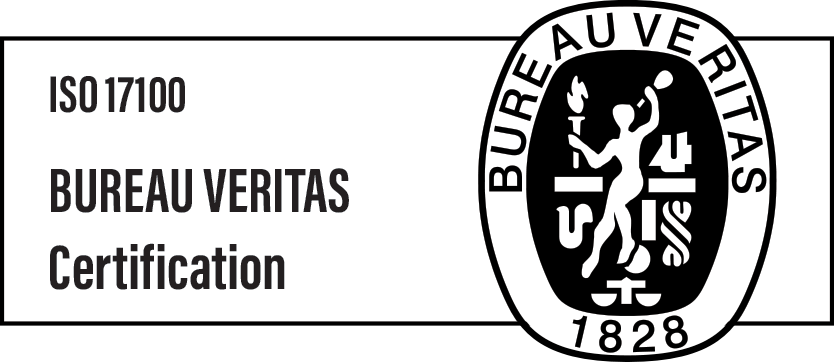Translation for video production and the movie industry

In a world surrounded by multimedia messages, the need for and importance of audio-visual (AV) translation have risen significantly over the last few years. While the image itself has always been a universal means of communication, verbal content has made it more complicated to spread the message across cultures and nationalities. That is why, with the development of the movie industry and video production, AV translation arrived with its methods and techniques. And that’s what we’re going to talk about today.
Making use of AV translation is not limited only to the motion picture industry. In fact, more and more companies have decided on creating special video materials which help them reach a broader audience. Below, we will take a closer look at the most effective AV translation methods and how you can use them in your business.
Methods of movie translation services
Translating movies has become a huge demand since the rising popularity of the cinema and the streaming platforms and other applications offering VOD services. When it comes to verbal content, AV translation for the movie industry uses two, highly common methods: voiceover and subtitling.
VOICEOVER TRANSLATION
The first technique involves adding an external voice that “covers” the original content to a certain degree, depending on the type of translation. Voice-over is a popular choice, especially in fast-moving videos in which the message needs to be conveyed immediately. There are four main categories of voiceover: off-screen voiceover, UN-style voiceover, voice replacement, and dubbing.
- Off-screen voiceover (or off-screen narration) is used when the character is not present directly on the screen, but they are known to be somewhere in the main location of the scene. In other words, viewers can hear the character’s voice, but they are not visible. This type of translation does not require much editing since the voiceover artist just speaks the target text; no lip-syncing is involved.
- UN-style voiceover is often used in interviews or news programmes. This technique requires a bit more editing since the voice needs to be matched with the person on-screen. By introducing a UN-style voiceover, viewers can hear the original text at the beginning, which is later being lowered and “covered” by the target text.
- Voice replacement: as the name suggests, voice replacement is about replacing the source content with the target one. It may seem similar to dubbing, but there are some essential differences. With voice replacement, there is not so much attention paid to lip-syncing; moreover, additional sounds like laughter are usually omitted. However, the tonality of the original text should be as similar to the source as possible.
Finally, in comparison to the previous three methods, dubbing seems to be the most “invasive” type of AV translation. By using this technique, viewers do not hear the original soundtrack, but only the translated target version of it. Dubbing requires a whole cast of actors where one person is entitled to only one voice; moreover, a lot of time needs to be spent on post-editing and linguistic consultation to match the translated version perfectly to what is happening on-screen. That is why dubbing is the most expensive and time-consuming AV translation method.

SUBTITLING TRANSLATION
Adding additional text to your video materials is another method of AV translation; it is also the cheapest method since it does not require a different team of voice actors or sound engineers. As easy as it may seem, subtitling translation is a complicated art of transferring the language and editing the text most satisfyingly.
Mainly, subtitling translation was added to help people suffering from hearing loss or hearing impairments. Nowadays, subtitles are used in almost every Netflix series, movie, or YouTube video. There are some technical requirements when it comes to creating subtitles; usually, they cannot exceed two sentences at once, varying from 35 to 43 characters. What is more, we can distinguish different types of subtitles depending on how detailed you want your content to be for the target audience. Thus, subtitles may involve not only the characters’ parts but also background noises, translation of the signs visible on the screen, and many more.
Problems of adapting
Adaptation is a translation method that focuses not as much on accuracy as on the linguistic and cultural aspects of the source text. In other words, adaptation is a creative (as opposed to literal) translation that makes the target audience feel more familiar with the text. However, by using this method, we may encounter a few challenges.
The adaptation process requires a broad knowledge of the target culture. As mentioned before, adapting does not equal translation, as there is little or no one-to-one correspondence with the source text. Therefore, while deciding on introducing the adaptation into any motion picture, it is important to be aware of any cultural differences and nuances. For example, unlike in many European countries, Friday 13th would not work in the Spanish culture as an unlucky day; rather, we would have to change it to Martes y 13, “Tuesday 13th”.
Digital video translation services
In the uncertain time of the pandemic, many companies have been forced to move their services online, increasing the need to create and localise video materials. From advertisements and announcements to training and educational videos, businesses have been striving to reach as broad an audience as possible – with the help of translation services.
Currently, the YouTube platform is the most popular one when it comes to digital video materials. It is also fairly easy to add subtitles there, but the challenge starts with the content’s accuracy and proper cultural localisation. Why is it so important? Mainly because video platforms and materials have become an essential source of information worldwide. That is why your business must invest in a good AV translation service.
At Aploq, we offer professional translation services, helping you with broadening the coverage and reaching a bigger audience. With tools, techniques and methods perfectly adjusted to modern needs, we will make sure that your video content is properly translated, adapted, and localised. Would you like to know more? Drop us a line!

